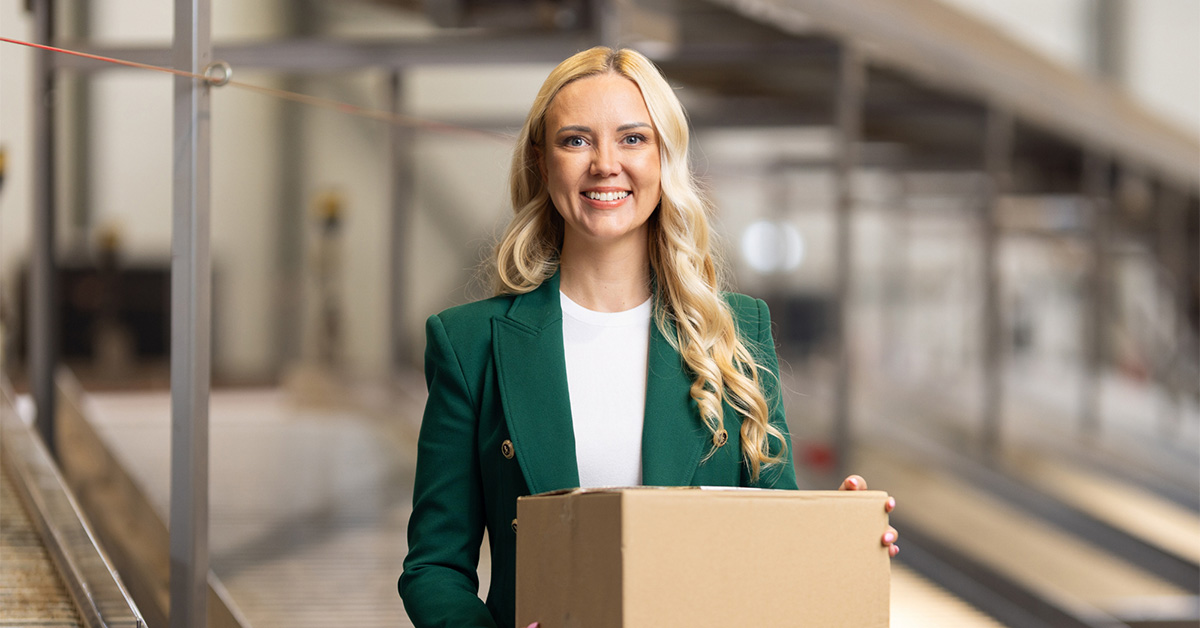Last year, e-commerce revenue reached a record €652 billion, and forecasts predict a 31% increase by 2027. This growth brings a rise in courier deliveries, adapting to the demands of the modern market. Despite innovations, the so-called “last mile” – delivering a parcel directly to the final recipient – remains the most expensive part of the logistics chain, accounting for about 50% of total delivery costs and leaving a significant ecological footprint. Why is this the case, and how can the process be optimized?
The costs of the “last mile” are determined by several factors. First, fragmented routes – unlike centralized large-batch deliveries, in the final stage, each parcel is delivered individually to each recipient. Couriers deliver small parcels to various addresses, reducing transport efficiency. In cities, they face traffic congestion, limited access to addresses, or parking issues, while in rural areas, the long distances between delivery points pose additional challenges. Regional roads are often in poor condition, which slows down logistics and increases vehicle wear and tear.
“Another major challenge in last-mile delivery is that most people are not home during the day, so 8-25% of all courier deliveries fail,” explains Sanita Bērziņa, CEO of Venipak Latvia. This significantly reduces delivery efficiency and increases emissions from repeated delivery attempts. Repeated deliveries also impact last-mile costs because every failed attempt incurs extra costs for couriers, logistics specialists, and sorters.

Another challenge is product returns, which increase the workload for couriers and warehouses and add to CO2 emissions. Many companies, especially in the budget and discount sectors, have started charging for returns to reduce operational costs.
“Considering both global connectivity and the costs of the ‘last mile’ paid by the end consumer, the logistics industry is forced to address this issue. This is especially important because e-commerce is expected to grow by 31% in the next three years, which means deliveries will increase by a third,” says Bērziņa.
Studies show that fashion is the e-commerce segment with the highest revenue – €140.9 billion of the €652 billion in total e-commerce revenue in 2023 (22%). This sector also has the most returns: customers order, try on, and return products. This adds pressure on courier services and impacts the environment.
E-commerce can tell us a lot about Europeans’ lifestyles. The financial data is as follows:
- Fashion – €140.9 billion (22%)
- Clothing – 59%
- Shoes – 23%
- Bags and accessories – 18%
- Electronics – €135 billion (21%)
- Household appliances – 32%
- Electronics – 68%
- Hobbies and leisure – €133 billion (20%)
- Toys – 10%
- Pet products – 10%
- Sports equipment – 17%
- Media – 31%
- Other – 33%
- Food products – €63 billion (10%)
- Beverages – 39% o Food – 61%
- Furniture and home goods – €63 billion (10%)
- Home goods – 38%
- Furniture – 62%
- Personal care products – €62 billion (9%)
- Household cleaning products – 11%
- Health products – 37%
- Hygiene products – 53%
- DIY products – €53.9 billion (8%)
- Garden products – 17%
- Automotive products – 28%
- Repair products – 55%
It is clear that people are increasingly ordering not only home goods but also food, cosmetics, and cleaning products. In 2025, the main task in logistics will be developing eco-friendly delivery solutions. Fortunately, Venipak is a fully private company, allowing us to make decisions faster and more flexibly to adapt to market needs.
“Another trend this year: consumers value predictability and punctuality in delivery over speed. Especially for city dwellers, time management is key,” adds Andrius Ladausks, new Venipak CEO in the Baltics. Notably, parcel lockers and pickup points are becoming increasingly popular: our research shows that more than half (56%) of customers in Latvia choose this delivery method at least once a month, followed by pickup points and home delivery (23% each).
Parcel lockers and pickup points are more eco-friendly than home delivery, as couriers can drop off multiple parcels in one location. A significant convenience for recipients is the ability to access parcel lockers at any convenient time, streamlining routing strategies and improving delivery efficiency.
“That’s why Venipak has expanded its parcel locker network in the Baltics by 70% and plans to continue expanding until the end of the year, aiming to reach 800 lockers across the region. This allows us to optimize delivery routes and reduce costs,” says Ladausks. Studies show that if all courier services used only parcel lockers and pickup points, CO2 emissions in cities could decrease by up to two-thirds, and even more in rural areas. By allowing carriers to make fewer trips to decentralized delivery locations, this network significantly reduces fuel consumption and resulting carbon emissions.
The “last mile” is not only a challenge but also an opportunity for innovation. Companies that can effectively integrate new technologies, meet customer demands, and balance sustainability with convenience will lead the way in this competitive industry. The market demands not just simple deliveries but the fulfillment of promises regarding speed, quality, and comfort.




